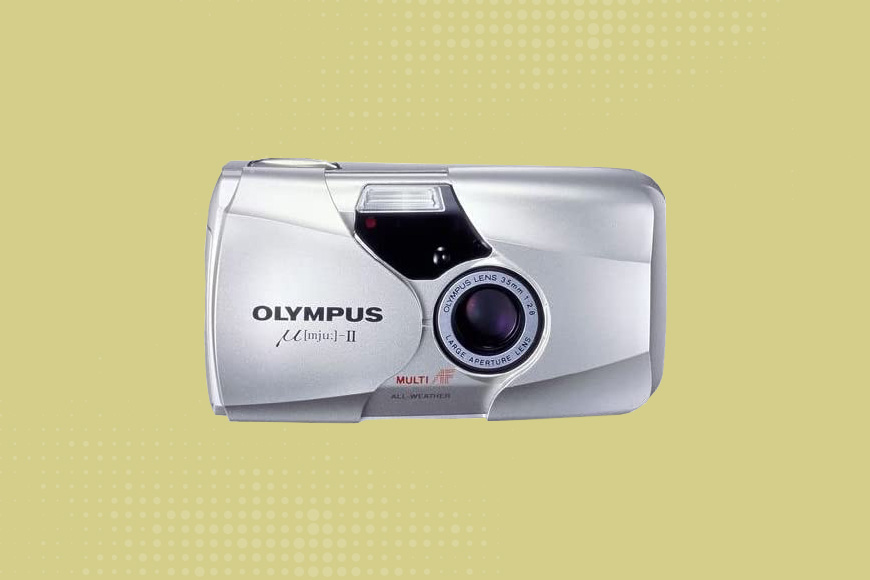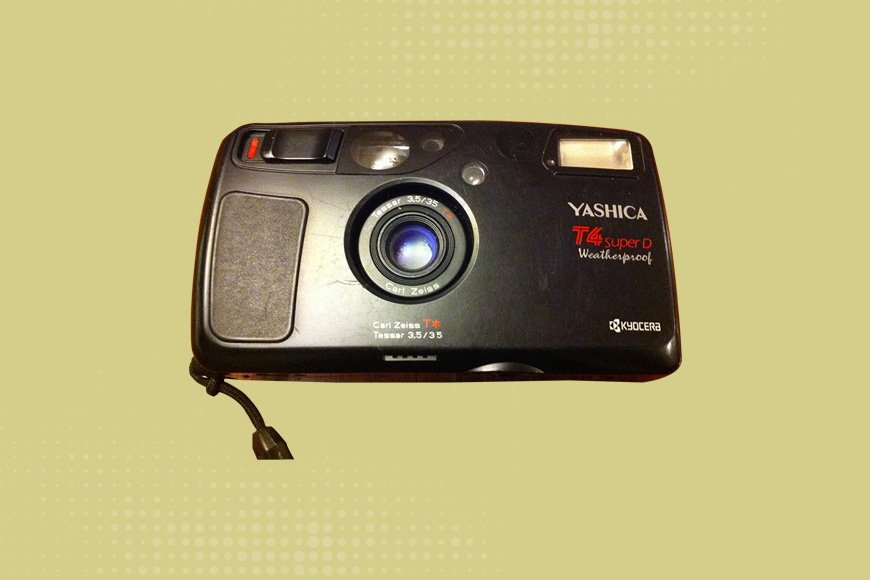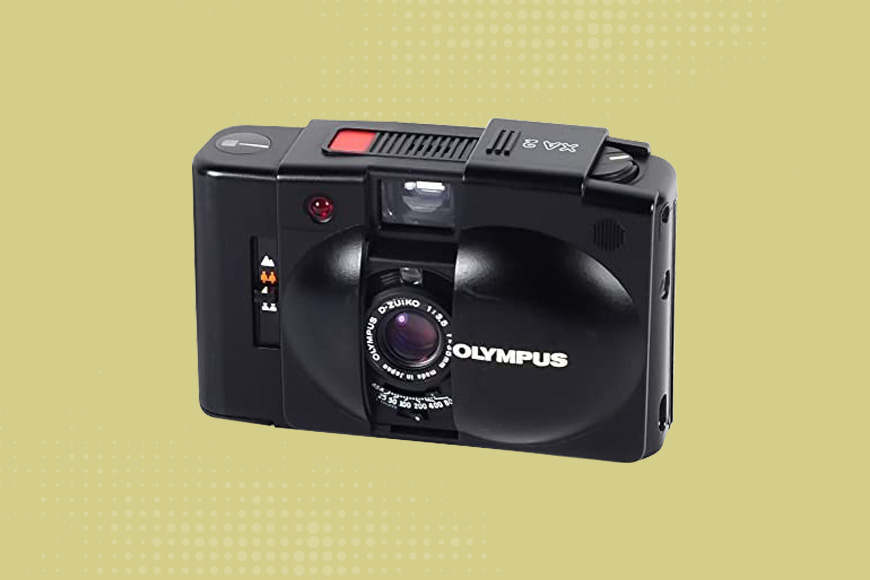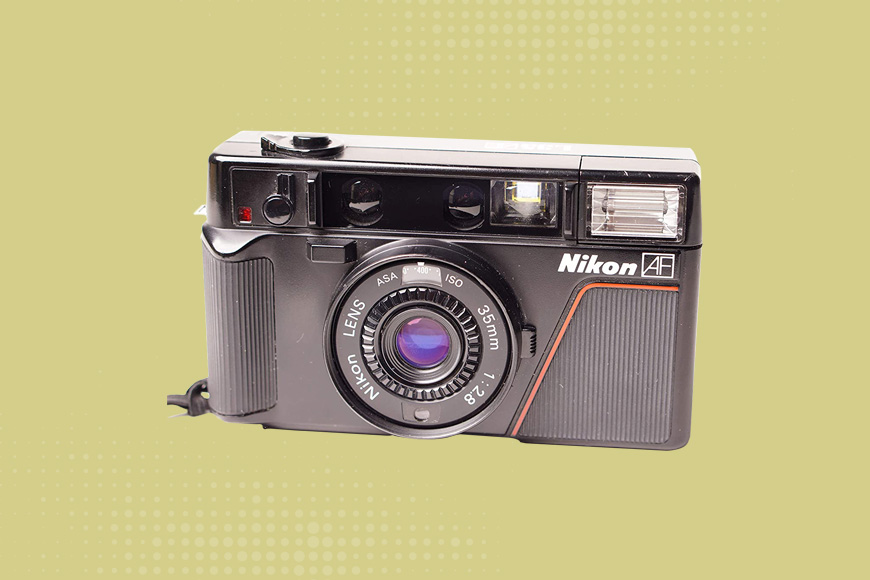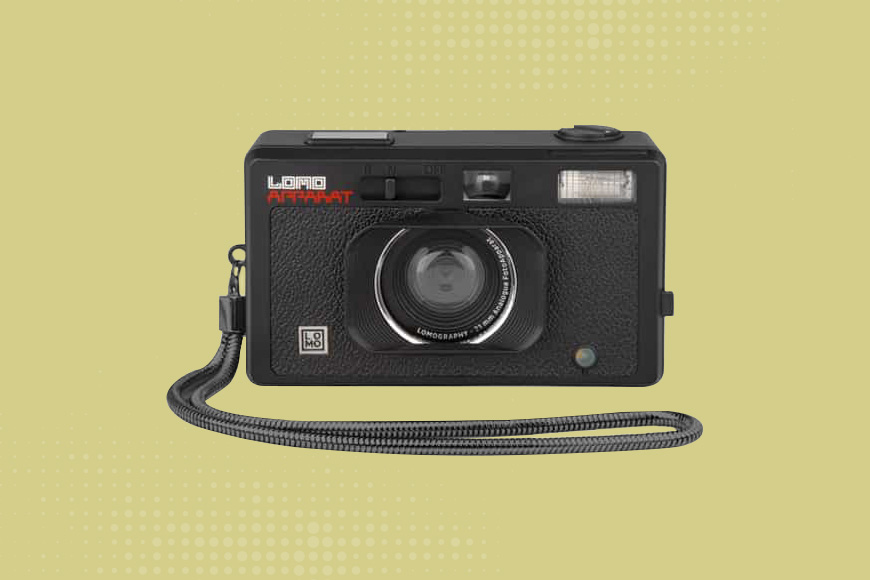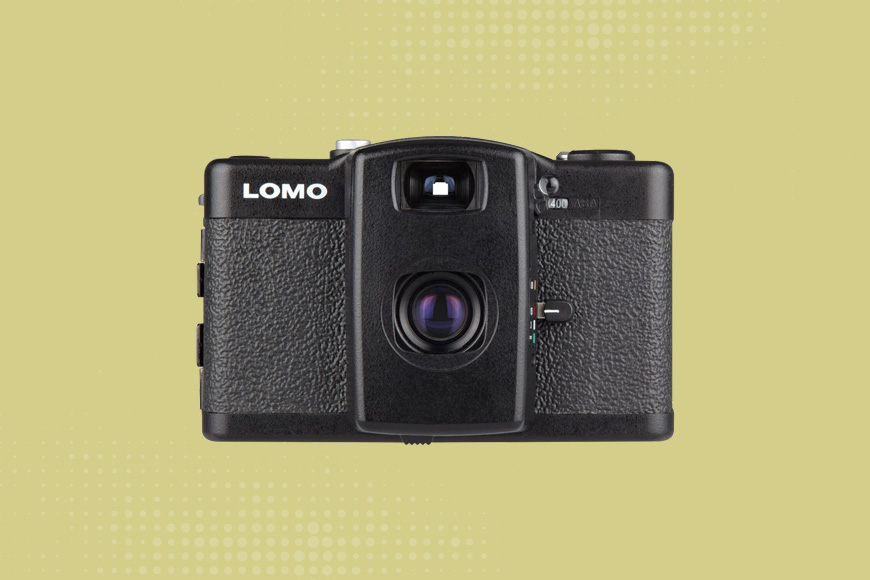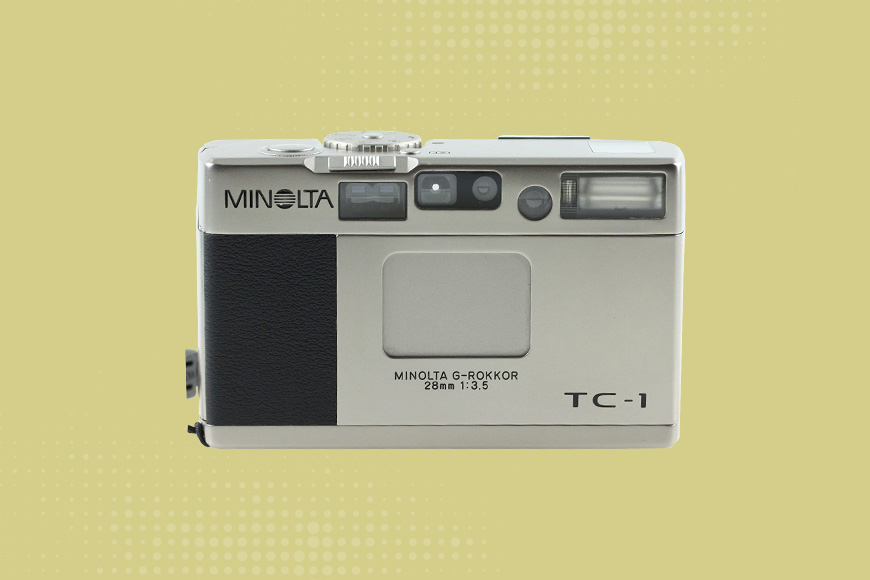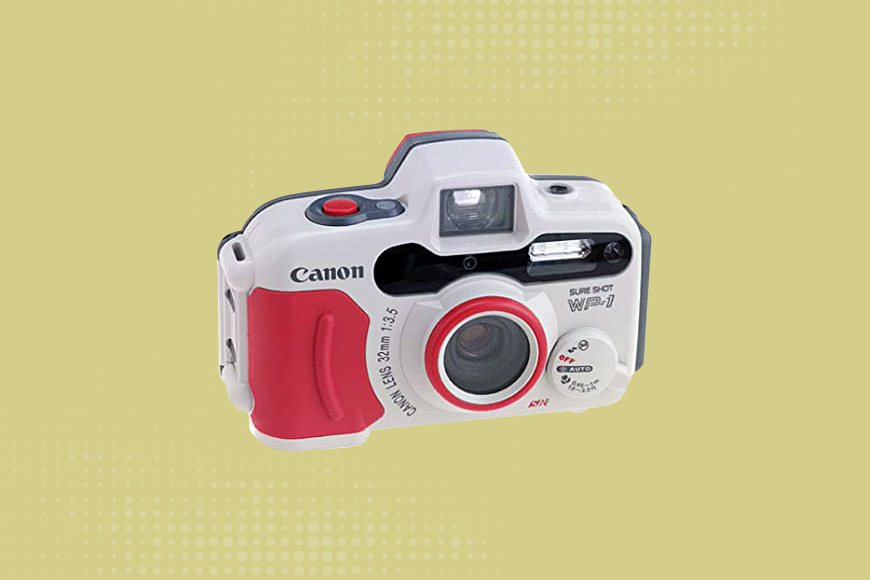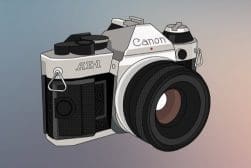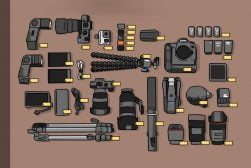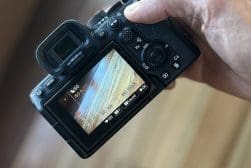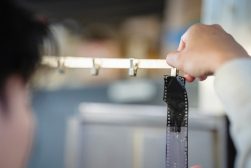
Best Point and Shoot Film Cameras in 2024
In a world of smartphone photography and mirrorless cameras, point-and-shoot film cameras provide a refreshing alternative. Here's how to choose a good one.
Shotkit may earn a commission on affiliate links. Learn more.
Interested in bringing back some of that retro vibe with a point-and-shoot film camera?
Good for you! I love the nostalgia of analogue photography, with all its grainy quirks and imperfections.
Whether you’ve shot 35mm film before or not, this guide will help you choose the best point-and-shoot film camera for your money.
Vintage point-and-shoot cameras are small, light and easy to use.
Best of all, they’re cheap, especially when compared to modern-day digital cameras.
Don’t expect great image quality or fancy features – part of the charm is the inconsistency and ‘rawness’ of the pictures.
Just like listening to vinyl vs an mp3, there’s definitely more soul in a 35mm film print!
The only problem is actually finding point-and-shoot film cameras still in stock…
With that said, I’ve tried to point you in the right direction in this guide, so let’s take a closer look.
What Are The Best Point and Shoot Film Cameras?
Olympus Mju II (Best 35mm Pont and Shoot Overall)
- Light and compact
- Weather sealed
- Produces sharp images
- Low price
- Rubber seals sometimes let in light
- Flash is on by default, needs to be turned off manually
This is hands-down the best 35mm point and shoot camera overall.
The Olympus Mju II (aka Stylus Epic) is a fun camera and my personal pick from this bunch of the best point-and-shoot film cameras.
I owned this many years ago when it was first released, and still recall the satisfyingly smooth slide of the lens cover to turn the camera on – I could do it with one hand when getting it out my pocket, and be ready to take the photo.
It’s idiot-proof and extremely simple to use. All you need to do is insert your favourite 35mm film and get shooting exactly what you see. No need to worry about anything except for composition.
It’s plastic, so small, light and easy to pop in your pocket and always have a camera around.
As the body is weather-sealed, you can take it out in all weather conditions.
Something to be aware of though, this sealing will degrade over time and you’ll get light leaks.
Personally, I’m a big fan of those, especially when using grainy film. But if you want a cleaner look, take the camera for a test drive before you buy.
Regardless, the picture quality for such a cheap film camera is high. The lens is sharp for a camera of this price, making it the best film point-and-shoot for those on a tight budget.
And, for the techies amongst you, a couple of technical details:
There is the possibility of using spot-metering with this camera. And, although it’s set to a default aperture of f/2.8, you can force it to shoot at higher apertures by using higher ISO film. Higher ISO equals more tasty grain!
Again if you want the best film point and shoot, this is it!
Contax T2 (Cult Classic)
- Zeiss lens
- Flash off by default
- Great autofocus setting
- Very rugged build
- f/2.8 is the auto setting
- The price
The Contax T2 has been making waves in the premium compact camera class. Even Kendall Jenner, Drake, and Neymar have one.
But, other than it being fashionable, why?
Well, the first reason is its Zeiss lens, which gives you (or the celebrity) photographer amazing sharpness and micro-contrast.
Its titanium body is extremely robust, so you can take this baby out on the hiking trails or the dancefloor and not worry about it getting a few knocks.
It has great battery life, and the autofocus has an infinity setting which does away with one of the main issues with many compact cameras: their struggle to focus through things (for example, windows), which can limit your creativity.
It’s an extremely easy and fun camera to use and, if you have the cash, it’s worth the hype.
Yashica T4 (Best for Beginners)
- Iconic
- Sharp, Zeiss lens
- Easy to use
- Tiny viewfinder
- Autofocus can be inaccurate
Marketed to amateurs when it was first released, the Yashica T4 ended up being sought after by professionals.
That was the 90s, and the Yashica T4 is responsible for some of the most iconic fashion and lifestyle photography from that time.
So, it’s a great camera. And, like the Contax above, much of that comes down to the quality of its premium Carl Zeiss lens.
It’s super simple to use, with no frills, just load it with film, point, and shoot.
The images are nice and sharp thanks to the lens, and it’s just a fun camera to walk around with.
One great feature is that the viewfinder is right above the lens, so there’s no mad difference between what you compose and the image you end up getting.
Olympus XA2 (Best Budget P&S Film Camera)
- Versatility
- Easy and fun to use
- Lightweight
- Not the most durable long-term
- Limited settings
This is our top pick for the best cheap point and shoot film camera!
The Olympus XA2 is a cheap and cheerful, perfect daily-carry camera. If you’re just getting into photography or want to try out a 35mm point-and-shoot before committing to one of the more expensive options. You can then have more budget to buy point and shoot camera film!
One thing I love about it is its zone focusing. With this, you select the approximate distance of your subject. This can give surprising results which, to my mind, is one of the joys of shooting with film, and on these kinds of cameras.
Because it is so basic and there aren’t so many settings, it’s quick, versatile, and you can focus on composition. Set your ISO, select a focal zone, and get shooting.
Nikon L35af (Best Value)
- Ability to set ISO in-camera
- Side lugs for easy carrying
- Takes standard AA batteries
- Good price for the range of features
- Relatively heavy and bulky
- Lens flaring
For an affordable 35mm point and shoot camera, especially in a world where they are fashionable and often overpriced, this has a lot of features.
Although it has zone focusing, there’s a distance scale in the viewfinder which shows you where on the scale your subject is, taking out the guesswork.
ISO can be set using a dial on the lens. With this, you can have more control over the final image, as you’re not limited to the film’s ISO.
You can make more creative choices, for example, pushing the film to overexpose it.
The camera also has good metering that will compensate for any filters you attach to the lens, and a backstop compensator.
This switch bumps the exposure up 2 stops to help expose for subjects shot against bright backgrounds. This is great for taking portraits.
Add to that its use of AA batteries, and you won’t have to search for any of the weird, random batteries that old cameras often take. You’ll save money and shoot more, and after all, that’s what you get a point and shoot for.
Lomo Aparrat (Highest Fun Factor)
- Pros here
- Sharp lens
- Creative accessories
- Lightweight
- Cheap
- Limited features
Lomo cameras, just like Holgas or other toy cameras, are a whole lot of fun.
The point with these cameras is to get creative and just shoot without worrying about the technicalities.
The 21mm plastic lens has a set aperture of f/10, and there’s a fixed shutter speed of 1/100th of a second.
Lomo also provides a nice bag of accessories with the Apparat. There’s a close-up lens for macro photography, a kaleidoscope lens, a Splitzer (for splitting exposures, which would be cool when taking multiple exposures), and coloured flash gels.
Like I said, fun. A camera you can take to parties, on holiday, wherever, and bring back images that are out of the ordinary.
Olympus XA4 (Best Macro)
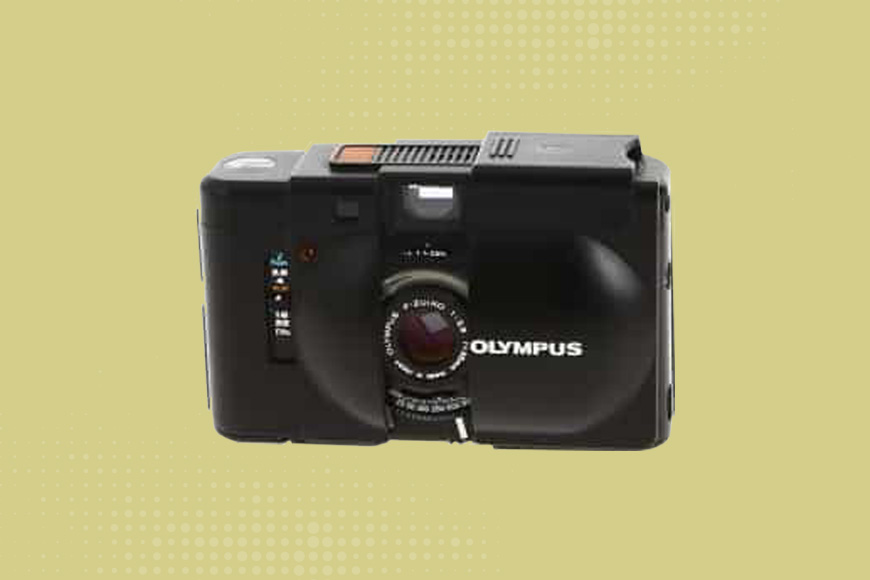
- Portable and inconspicuous
- DX coded
- Manual ISO adjustment
- Sharp lens
- Relatively expensive and hard to get hold of
The XA4 is very similar in look, feel, and specifications to the Olympus XA2.
It’s small, portable, and has a great lens and a dial that will let you manually set your film speed.
Unlike the XA2, which has a 35mm lens, this has a 28mm lens that lets you focus down to 30cm, so it’s ideal for shooting up close and personal with your subject.
If you’re shooting still life macro, the camera’s wrist strap also doubles as a measuring stick, as it’s marked out with the camera’s zone focusing distances. Retro.
Lomography LC-A+
- Compact
- Batteries last a long time
- Good shutter speed and aperture range
- Iconic
- Might be too small for some hands
This is the upgraded version of the original LC-A, the camera that launched the iconic Lomography movement.
Shooting with one of these, you know you’re going to get saturated, high-contrast images, with the classic vignetting that is a Lomography hallmark.
It gives you apertures from f/2.8 to f/16, and shutter speeds from the bulb setting (keep your shutter open for as long as you want) to 1/500.
You can set the ISO, and there’s also a multiple exposure switch that will stop the film from winding on, allowing you to take as many shots as you want in one frame.
Simply put, this is a premium product for a particular style of photography that has creativity at its heart.
Minolta TC-1
- Rugged build
- Sharp lens
- Aperture control
- Pretty expensive
Like many of the luxury compact cameras from the nineties, the Minolta TC-1 is built like a tank. A titanium tank.
The autofocus is very fast and the 28mm lens, although not a Zeiss like some of its more upmarket relatives, is still super-sharp.
You can control the aperture directly from the camera, too, so you can take control of the exposure.
It also has a setting dial with seven different options including, exposure compensation, flash and ISO. Once you’ve got your settings lined up, you can press ‘hold’, and the camera remembers those settings even if you turn it off.
Canon Sure Shot
- Waterproof
- Easy to use
- Solid design
- Limited features
The Canon Sure Shot WP-1 is a waterproof camera with very basic features.
But that’s ok. It was aimed at the market just above disposable cameras, for people who want to take fun snaps without having to mess around with settings.
And that’s especially important for an underwater camera. If you’re taking photos when swimming or snorkeling, the last thing you want to think about is exposure or shutter speeds.
With this, apart from the self-timer, pretty much the only setting is that you can turn the flash on and off. That’s it. And then you shoot.
Buyer’s Guide: How to Choose a Reliable Point-and-Shoot Film Camera
Choosing a point-and-shoot film camera involves considering several factors, including:
- Film Format: The most common format is 35mm, which offers a good balance of image quality and ease of use. Other formats include medium format, which offers higher image quality at the expense of larger size and cost, and 110 or APS, which are smaller and cheaper but offer lower image quality.
- Lens Quality: Look for a camera with a good-quality lens. Brands like Canon, Nikon, and Minolta are known for their optics. The lens should be clean and free of scratches or fungus.
- Research prices: the best point-and-shoot film cameras may have been relatively cheap back in their day, but now, as a rare commodity, they can be rather pricey. However, trends come and go, so if you can wait, do so – fluctuations in price are expected. Point-and-shoot film cameras can range from very cheap to quite expensive depending on the brand, model, and condition.
- Focus System: Some point-and-shoot cameras are fixed focus, which means everything from a certain distance to infinity is in focus. Others have autofocus systems. Consider your needs and pick accordingly.
- Exposure Control: Most point-and-shoot cameras automatically control exposure, but some offer limited manual control or exposure compensation. If you want more control over your images, look for a camera with these features.
- Flash: Consider whether the camera has a built-in flash, and if so, whether it can be manually controlled. Some cameras always fire the flash in low light, which may not always be desirable.
- Size and Weight: One of the main advantages of point-and-shoot cameras is their portability. Consider the size and weight of the camera and whether it fits your needs.
- Reputable Brands: Brands like Canon, Nikon, Olympus, and Minolta have a history of manufacturing reliable film cameras. Look for well-regarded models from these companies.
- Camera Condition: When buying a used film camera, check for any signs of wear and tear, such as scratches, dust, and fungus in the lens, or corrosion in the battery compartment.
- Mechanical and Electronic Functioning: Test all the camera’s functions before purchasing. Check the shutter, the film advance and rewind mechanisms, the flash, and the autofocus. For electronic cameras, ensure the electronics are working correctly.
- Maintenance: A camera that has been well cared for will generally be more reliable. Ask the seller about the camera’s history and whether it has been serviced regularly.
- Spare Parts and Repair: Some older models have good availability of spare parts, making them easier (and cheaper) to repair if something goes wrong. Research whether the camera model you’re interested in falls into this category.
- Be patient: Some models of the best point-and-shoot film cameras are rare and hard to find.
- Compare lenses: this is what will determine the quality of your images
Other Options: Is There a Digital Camera That Shoots Like Film?
Some photographers want all the convenience of a modern-day DSLR or mirrorless camera but the aesthetics of a retro film camera.
I should know, because I’m one of them!
My recommendation is the Fujfilm X100V – a retro-inspired rangefinder camera, with tons of film-look presets that are applied in the camera when you shoot.
Since it’s made my Fujifilm, all the film stock emulations are incredibly realistic – aside from the fact that you’ll obviously need to print the photos out, it’s almost impossible to discern a photo taken with this camera and an actual film one.
All the other Fujifilm X-series cameras allow you to apply these film-look presets ‘in-camera’, but the X100 line looks the best in my opinion.
The Fujilfilm X-Pro3 is another great option, especially since it allows you to ‘hide’ the read LCD screen completely, making it feel more like a traditional 35mm film camera.
As an added bonus, the rear screen displays an image of the film stock being ‘used’, enhancing the feeling of shooting with a point-and-shoot film camera.
If you have the budget for one, the Leica Q or Q2 shot in JPEG format also has a somewhat film-like quality to the images.
This is especially noticeable when shot at high ISOs, with the noise resembling grain in the shadows.
How to Choose Film Stock for Your 35mm Film Camera
Choosing the right film stock for your 35mm point-and-shoot film camera can have a significant impact on the look and feel of your photos.
- Kodak Portra 400: This color negative film is a favorite among portrait photographers due to its excellent skin tone reproduction. It’s also versatile enough for many other types of photography.
- Fujifilm Superia X-TRA 400: This color negative film is an affordable and versatile option, great for a variety of lighting conditions and suitable for everything from street photography to landscapes.
- Ilford HP5 Plus 400: This is a popular black and white film known for its wide exposure latitude and flexibility. It’s suitable for many different lighting conditions and is a great choice for those wanting to experiment with black and white photography.
- Kodak Ektar 100: Known for its vibrant color and very fine grain, Ektar is an excellent choice for landscape and nature photography where you want to capture a lot of detail and rich colors.
- Fujifilm Velvia 50/100: This is a high-saturation slide film that is popular for landscape photography due to its rich, vibrant colors and high contrast. Note that slide film (also known as reversal or transparency film) creates a positive image that can be viewed directly or scanned.
- Kodak Tri-X 400: Another classic black and white film, Tri-X is loved for its rich contrast and grain. It’s a great choice for street photography, reportage, and fine art photography.
- CineStill 800T: This unique film is actually motion picture film adapted for still photography. It’s balanced for tungsten light and can create interesting halation effects around bright lights.
Remember that each film stock will yield different results depending on the lighting conditions and the settings you use on your camera. Experimenting with different films can be a great way to discover new creative possibilities.
Where Can I Buy Point and Shoot Film Cameras in 2024?
Point-and-shoot film cameras can be bought from various places, including:
- Online Marketplaces: eBay, Amazon, and Etsy offer both new and used models.
- Specialized Online Stores: B&H, KEH, Adorama, and Lomography specialize in film cameras.
- Local Camera Stores: Visit these for expert advice and hands-on experience.
- Thrift Stores and Garage Sales: You might find good deals here, but availability can be inconsistent.
- Online Classifieds: Check Craigslist or Facebook Marketplace, but exercise caution when dealing with private sellers.
Always check the camera’s condition and functionality before purchase – see our guides on the best places to buy used cameras, and what to check when buying used camera lenses.
The mighty Amazon is always an option, or you can try KEH Camera, which specialises in used camera. Anything rare, old, or funky, you might be able to pick up on their site.
One of the most pleasant ways I’ve found, if you’re not looking for anything in particular, is to visit old camera shops and see what they have in stock.
Sometimes they’ll let you take the camera out for a day, and shoot a roll of film first to see if it’s what you want.
SLR vs Point and Shoot Cameras – Which Is Better for Photography?
Here’s a simplified table comparing SLR and Point and Shoot cameras:
| SLR Cameras | Point and Shoot Cameras | |
|---|---|---|
| Image Quality | Typically high due to larger sensors and interchangeable lenses | Good, but usually less than SLR due to smaller sensors and fixed lenses |
| Control | Full control over settings like shutter speed, aperture, ISO | Limited manual controls; mostly automatic settings |
| Lens Variety | Interchangeable lenses for versatility | Fixed lens; no option to change |
| Size & Weight | Larger and heavier | Compact and lightweight |
| Ease of Use | Can have a steep learning curve | Generally easy and straightforward to use |
| Cost | More expensive, especially when factoring in lens cost | Generally more affordable |
Are SLR or Point and Shoot Cameras Better for Photography?
Both are great for photography. You can even shoot amazing photos on a disposable camera, which is the least complicated device out there.
They will only give you different experiences.
With a point-and-shoot, you don’t need to have as much technical knowledge, so they’re easier and quicker to use.
With an SLR, you’ll need to know how the different camera settings interact, otherwise, you might waste your film.
More FAQs about Point and Shoot Film Cameras
Are point-and-shoot film cameras worth it?
Of course. They’re fun for everyone.
Fun for beginners who want to get into photography, and fun for more seasoned shooters who just want to work on their composition.
In terms of financial cost, though, that depends. Many of them are collector’s items, so you need to be patient if you want a good deal.
What are the negatives of a film camera?
No, but, it depends on how you see it. Film is expensive to buy and develop, and film cameras can be expensive to own (they can also be hard to repair).
Using a digital camera encourages the taking of millions of photos with little thought, then throwing most of them away.
But, when you shoot with film you slow down. You only take a photo when you’re sure you want one. It’s good for you, good for the mind and for developing your eye.
Why is film roll expensive?
Because one company, Kodak, pretty much have a monopoly on the market, they can set the market price, and others have to follow.
Also, because materials are getting more and more expensive, demand for films is increasing, and supply is going down.
Can you take professional photos with a point-and-shoot camera?
Yes, you can. Many well-known photographers, fine art photographers, fashion photographers, and the like, use point-and-shoots in their work.
Remember, it is not the camera that makes the photo, but the eye behind it.





